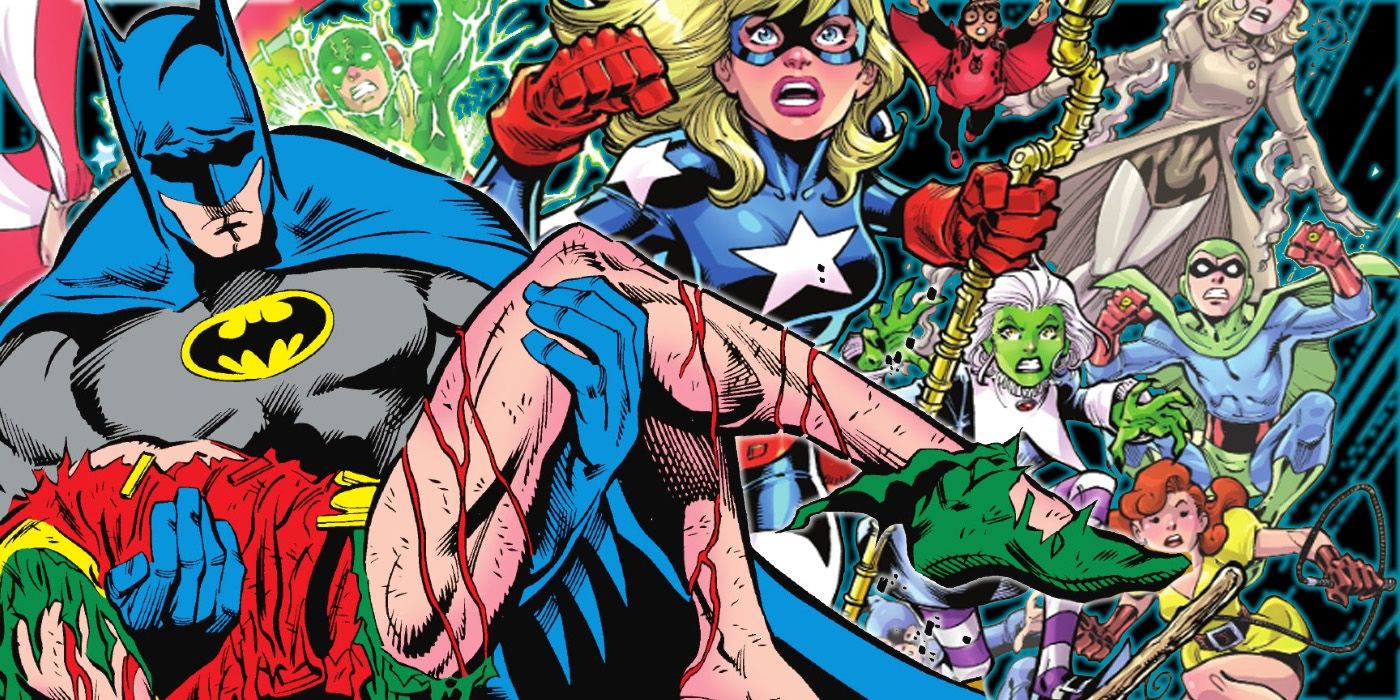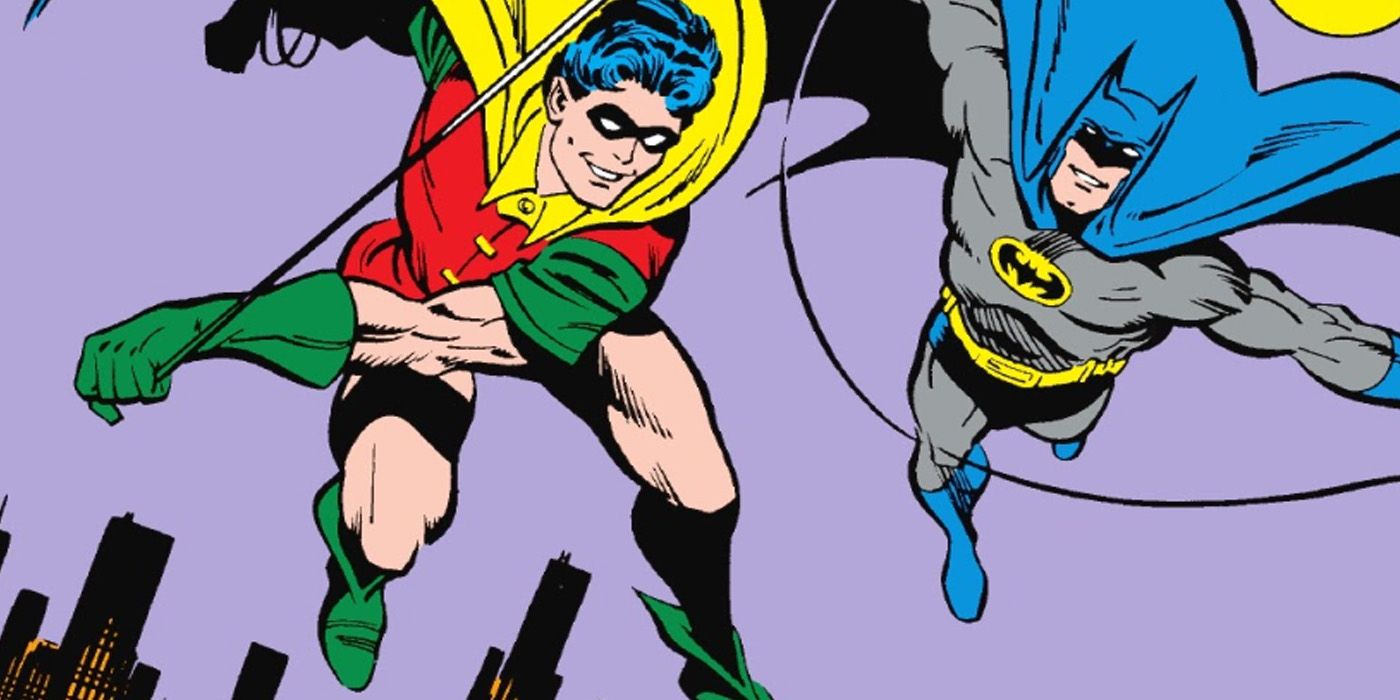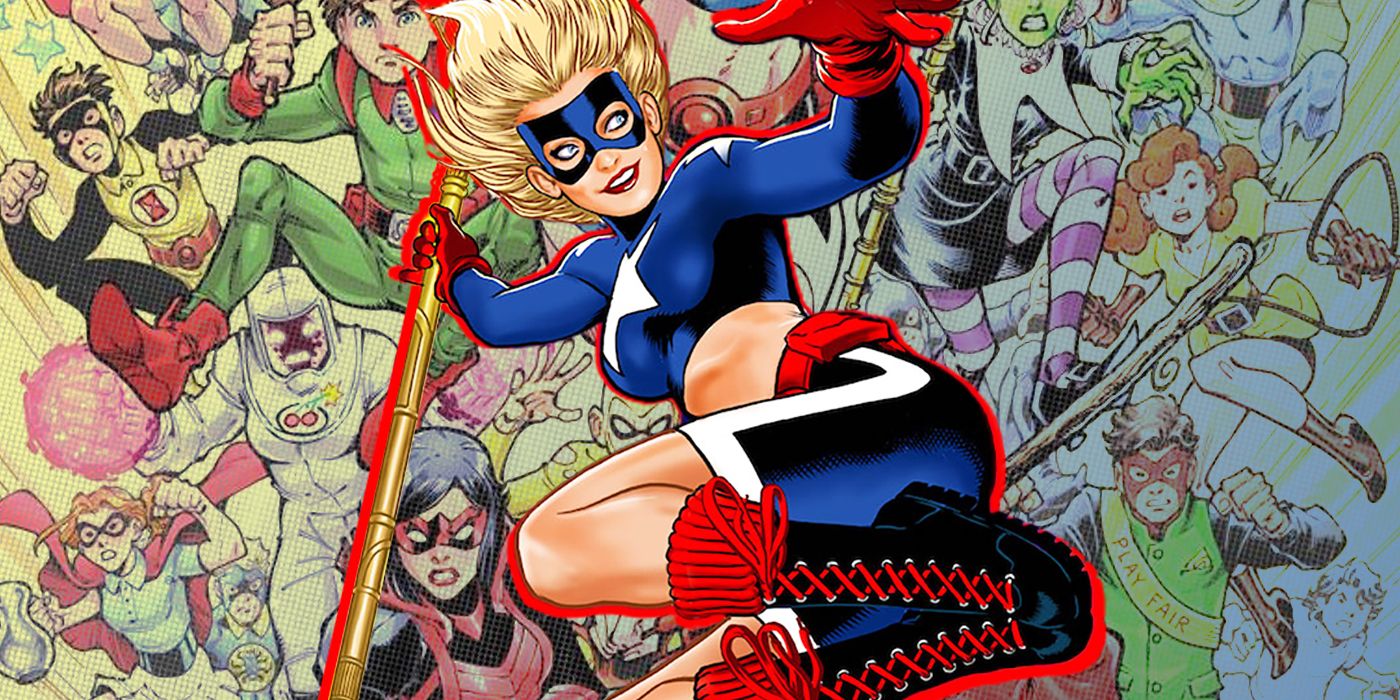The following contains spoilers for recent issues of Stargirl: The Lost Children, on sale now from DC Comics.
Love them or hate them, sidekicks remain a hallmark of the superhero genre. But while boy and girl wonders play an important role in the worlds they inhabit, their stories don’t always receive the justice they deserve. Fortunately, Courtney Whitmore and Emiko Queen are on hand to give fans a sidekick story that doesn’t play second fiddle to anyone.
Sidekicks have been part of the comics package for decades, but living their lives in the shadows of their mentors means it isn’t uncommon for them to drop off the map. Such is the case in Stargirl: The Lost Children #1 (by Geoff Johns, Todd Nauck, Matt Herms and Rob Leigh), where Stargirl Courtney Whitmore and her friend Emiko Queen, the new Red Arrow, embark on en epic adventure. The duo picks up the trail of a group of missing Golden Age sidekicks who have been disappearing since the 1940s, all the while, revealing what a true sidekick story should look like.
Stargirl Lets The Sidekicks Take Center Stage
What makes Stargirl: The Lost Children such a success is how it sets itself apart from other sidekick centered stories. Stargirl achieves this by making the story about sidekicks rather than focussing on the older heroes who trained them. A lesser sidekick story treats the sidekicks as tools rather than as characters in their own right, making them seem like an obstruction to the narrative’s emotional beats, rather than the source of said beats. When the focus is on the hero’s reaction to their sidekick, rather than the sidekick’s own perspective and growth, the young hero’s only value to the story is in how they can provide fuel for the hero’s journey.
This is the case with the second Robin, Jason Todd, and his apparent death at the hands of the Joker in Batman: A Death In The Family (by Jim Starlin, Jim Aparo, Mike DeCarlo, Marv Wolfman and George Perez). Jason Todd’s demise served as little more than a stepping stone for Batman’s own pathos. Todd ended up as a footnote in what should have been his own story. Though not exclusive to sidekicks, and considerably more prevalent with female characters in general, the concept of fridging is something sidekicks suffer from disproportionately. As characters with deep connections to their mentors, they are a convenient, if low hanging, fruit for superhero storytelling. While threatening, or even killing, a sidekick can generate tension, it ultimately undermines the story by emphasizing how shallow the sidekick’s role was in the first place.
The Kids in Stargirl’s Comic Tell a Mature Story
Beyond simply treating the sidekicks as rounded characters with agency of their own, Stargirl: The Lost Children tells a surprisingly mature story. What appears at first as the tale of a group of goofy juveniles lost to time, Stargirl: The Lost Children uses their apparent immaturity to juxtapose the wisdom and nobility the missing kids possess.
By refusing to reduce the sidekicks to caricatures or talking down to them Stargirl: The Lost Children elevates the concept of the sidekick to something profound. Here, they aren’t just supporting characters, but heroes in their own right. Their youth and inexperience in the face of the challenges that oppose them make their actions appear braver, and perhaps even more noble, than those faced by older heroes. Wing’s sacrifice in Stargirl: The Lost Children #5 (by Geoff Johsn, Todd Nuack, Matt Herms and Rob Leigh) is a genuinely touching moment. Witnessing a child accept such a fate and willingly make the ultimate sacrifice adds significant weight to the moment.
These Kids Make For A Modern Day Fairytale
Stargirl: The Lost Children’s solid moral core comprises characters making difficult decisions. Thanks to its inspirational narratives and colorful world of spunky kids, the piece also functions as a modern-day fairy tale. There’s something magical about the story that draws on recognizable elements from kid’s classics like Peter Pan and his Lost Boys, However, it couches said elements in a timeless setting that makes it enjoyable for both older and younger fans. The major villain, the Childminder, serves as a classic fairytale character. She’s the evil witch and the wicked stepmother all wrapped in to one. But rather than cartoonish or stale, her hideous aspect plays well against the age focussed story. Childminder’s advanced age and desperation to regain her youth acts as a balance for the young protagonists, reflecting the perceived extreme age of adults seen by the young. Childminder embodies the fears all readers felt as children, while remaining a believable grounded villain.
The grown up Corky Baxter’s reveal as the chief antagonist of the story works as a fantastic book end for the entire narrative. By making the main villain one of the sidekicks, Stargirl: The Lost Children avoids the pitfalls of lesser stories. Everything from start to finish is about them, tying up the narrative progression with the sidekicks’ own growth in an excellent union of theme and content. Not only does it keep the story focussed, but Corky Baxter’s journey, his discomfort with his own mission, and dismay at seeing himself grow into the villain, allows both adults and children to engage with the same story thread in a powerful way.
Stargirl’s Adventure Serves The Whole Golden Age
While Stargirl’s adventures stand up on their own, they also help lay the groundwork for a wider Golden Age revival. Though the sidekicks she freed from the clutches of the Childminder ended up in the modern age, their reincorporation into the timeline helps add some life and complexity to the retrospective simplicity of the Golden Age continuity. Between the Golden Age heroes and villains returning to their proper places in the past following the events of Flashpoint Beyond #6 (by Geoff Johns, Tim Sheridan, Jeremy Adams, Xermanico, Mikel Janin, Gary Frank, Romulo Fajardo jr, Jordie Bellaire, Brad Anderson and Rob Leigh), and the sidekick’s arrival in their future, whole new timelines have sprung into existence. Thanks to Courtney Whitmore, the Golden Age is ready to tell new stories that cross decades and connect the past with the present like never before.
In the end, Stargirl and Red Arrow saved the day and solved the case of the missing sidekicks. A touching story from start to finish, Stargirl: The Lost Children successfully captured the essence of childhood in a way that helped readers remember what it feels like to grow up. It was a chance to see the world through a child’s eyes once again. Wherever the lost children’s story goes next, their adventure here gave readers a golden opportunity to let their inner child run free.





